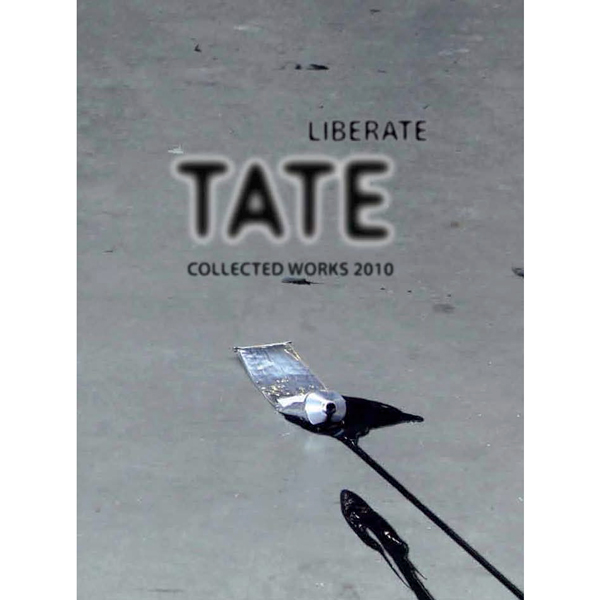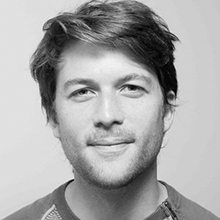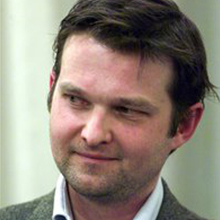Liberate Tate: Collected Works 2010
by Liberate

This work has been commented by 3 curator(s). Read the comments
Title
Liberate Tate: Collected Works 2010
Headline
Free Art From Oil
Concept author(s)
Liberate Tate
Concept author year(s) of birth
2010
Concept author(s) contribution
We are an art collective so jointly author and design our work.
Concept author(s) Country
United Kingdom (Great Britain)
Friendly Competition
Love Conflict Imagination (2010-2011)
Competition category
Mobilization
Competition field
nonacademic
Competition subfield
artist
Subfield description
Our art work consists of uninvited and self-curated interventions and performances in and around the most "the most successful arts museum organisation in the world": Tate, as part of the quest to free art from oil.
Check out the Love Conflict Imagination 2010-2011 outlines of Memefest Friendly competition.
Description of idea
Describe your idea and concept of your work in relation to the festival outlines:
In seeking to provoke the art world to go "Beyond..." Oil we use visual art and theatrical concepts to communicate an insitutional and corporate reality and point to alternative ways to experience art (and life) unpolluted - beyond enforced consumption of art and sponsorship by Big Oil in public insitutions. Liberate Tate is open to all who want to create art actions for a sustainable future.
Love Tate, Hate Oil www.twitter.com/liberatetate
What kind of communication approach do you use?
We make a mess, beauitifully. We invite participation, and have an audience in situ and then further via the mainstream media, who often lap up our stuff. Our actions have been picked up by media outlets worldwide and set off a national and international debate about ethics and art sponsorship. This has led to a growing movement of artists and the public raising their voices for a more ethical approach to arts funding. Submitted is video links and other documentation - search online 'Liberate Tate' for more.
What are in your opinion concrete benefits to the society because of your communication?
Liberate Tate is a collective exploring the role of creative intervention in social change. We aim to free art from the grips of the oil industry primarily focusing on Tate, the UK's leading art museum, and its sponsorship deal with BP. We believe Tate is supporting BP, rather than the other way around, cleaning its tarnished public image with the disinfectant of "progressive" culture.
Every time we step inside the museum Tate makes us complicit with acts that are harming people and creating environmental destruction and climate change, acts that will one day seem as archaic as the slave trade. That is why we call on Tate to become a responsible, ethical and truly sustainable organisation for the 21st century and drop its sponsorship by oil companies. As a public institution the Tate’s Trustees, chaired as they are by an ex-CEO of BP, must abandon its association with BP. All visitors to the Tate must be able to enjoy great art with a clear conscience about the impact of the museum on society and the environment.
What did you personally learn from creating your submitted work?
It's really a joyful experience be part of a Liberate Tate art work/intervention!
We do capture learnings as group and change our next performances based on this. Email us for more!
Why is your work, GOOD communication WORK?
We will leave you and others to judge this question.
2010 performances have included:
• License to Spill: an oil spill at the Tate Summer Party celebrating 20 years of BP support (28 June 2010) (see video http://www.youtube.com/watch?v=Pz-_2KLt1W0 / Photo (below): Immo Klink
See also full report http://www.youtube.com/watch?v=vPpWPbEPspY&feature=related
• Crude/Sunflower: installation artwork which saw over 30 members of the collective draw a giant sunflower in the Turbine Hall with black oil paint bursting from BP-branded tubes of paint (14 September 2010) (see video http://www.youtube.com/watch?v=NW1HOndS2xk)
• Dead in the Water: a contribution to Tate Modern’s 10th Birthday celebrations (15 May 2010) of dead fish and birds hanging from dozens of giant black helium balloons in the Turbine Hall (see video http://www.youtube.com/watch?gl=GB&v=xF7xUAjDXUU)
Where and how do you intent do implement your work?
The Liberate Tate: Collected Works 2011 is just a first year of beginning. Watch this space...
Did your intervention had an effect on other Media. If yes, describe the effect? (Has other media reported on it- how? Were you able to change other media with your work- how?)
Curators Comments

Frédéric Dubois
Liberate Tate is a collective effort that has charmed me on the basis of its a) collective nature b) "professionalism" in the execution of actions c) very creative criticism and d) the strong social impact.
The conceptual effort on Liberate Tate is quite high. All the social interventions are well-rounded works of art. They are well thought through and executed in a rapid manner, leaving the museum visitor to wonder whether this is an artsy performance or a radical activist event... or both. The concept behind Liberate Tate, moving between spheres of intervention (activism vs art), anchors the project as a refreshing way to voice protest. It is radical communication: a clear anti-market and pro-public institution message presented with the use guerrilla art tactics.
At first, I viewed the Liberate Tate interventions as too slick, too classic / classy or even conventional for the Beyond category. But the creative quality of the actions, as well as the quite radical message have convinced me to curate this project.
One must say that Liberate Tate acts as a magnet. It is very engaging. The many videos put out online about the actions testify to the collective nature of interventions. They are highly aesthetic and well carried. One feels he/she wants to take part. Only for this characteristic, Liberate Tate is an impressive set of actions.
The social impact is certainly quite important. It makes the audience and participants think... hink about the importance of protecting public institutions, think about the implications of corporate sponsorship, think about the independence of artistic creation, about the impacts of oil on our present and future, and many other important questions. Will Liberate Tate manage to influence the Modern Tate enough to become oil free by 2012? That's an open question. But the variety of performances and increasing number of people taking part and hearing of this initiative can only help in attaining this ambitious but clear-sighted goal.
Liberate Tate creates surprise, dialogue and has appeal with the mainstream, which can't be negative for the objective of this project. Now, does the creation of dialogue go far enough? Is it possible for the public to easily feedback on the actions and public interventions? Is the conversation being furthered in a number of ways online, beyond a Twitter feed?
Also, beyond launching thinking processes and activating conversation about publicly-funded vs privately-funded art, Liberate Tate makes a stark statement in favour of appropriating public institutions. People act upon what they perceive as the public good. They take back the spaces that belong to them. They refuse to let corporations and oil corporations in particular, seize the public domain.
This project is made in reaction to the appropriation of the Modern Tate by an oil corporation. Now, wouldn't it be of interest to intervene in autonomous ways as well? By making environmentally-friendly performances critical of big oil, but outside of a reactionary communication? This could for instance be done in confrontation with oil corporations directly, in a public space.
Congratulations on your works! Looking forward to seeing more actions in the near future.

John Calvelli
Protests against museum funding, and other dodgy museum practices, have a long and illustrious history ever since the Futurists proclaimed “We will destroy the museums…” To counter the museum, either 100 years ago or today, requires not only a political or social objective, but also calls for imagination and an aesthetic sensibility that the very object of one’s disdain is entrusted to protect. That’s why these proclamations, interventions and performances seem always, to me, to have at least a bit of irony built into them.
Liberate Tate executes the job of art protest very well starting, I imagine, from the conception and planning, and following through to the performance and its documentation. For a great museum like the Tate, a mediocre protest just wouldn’t do. Liberate Tate seems almost to become an extension of the museums’ collection and public events programming. The Black Sunflower event in the Turbine Hall was excellent, from its jogging of the artistic flower motif to the elegance of its performance. I was stupefied that Liberate Tate was able to pour its black molasses and exit with dignity, without consequence. The waters had parted!
I surely hope that the performance did have an effect of the Tate shifting its funding priorities away from BP, but neither would I be surprised if it didn’t. When I was working at MoMA in New York during a strike of museum workers, I spotted the director, Glenn Lowry exiting the museum through the picket lines, jovially remarking that any publicity is good publicity for the museum. It’s a win-win: the rights of free (and creative) expression are assured, and the attention of the public for a “New York minute” is (maybe) temporarily diverted from other forms of corporate-influenced communication.
I don’t like the Liberate Tate work any less for its potential failure at the level of museum policy. Social action against any dominating force should be fun and have elements of aesthetic play, as that is where communities are made best, in my opinion. Liberate Tate seems to have these in spades.

Alen Ožbolt
Liberate Tate: Collected Works 2010 is/are significant work/s. What is about and how it is the location? Space is presence also for the performer. Physical presence is awareness to the place, environment. You worked collective, performed in Collected Works from the outside but you get very inside, into centre of the thing, which is world famous modern museum. Action is interaction, beyond doubt, you/we need to engage - thus to step inside, art museum in this case - to exchange ideas and try to set up alternative. Framing to unframing. An exception to the rule, that’s how we can (re)arrange rules differently and in put it in wave, possibly towards a new museum. Outside eye it is very important, because demonstrate and show us (and them, to those who are inside) how and what is – position and situation - inside, indoor. Internal view is so often uncritical, unsuspecting view. Your “call on Tate to become a responsible, ethical and truly sustainable organisation for the 21st century and drop its sponsorship by oil companies” is very important voice and hope to put in effect and the institution will rethink the way of working and operating, “abandon its association with BP”.
Live, living performance is always very bodily, somehow biomorphic, which it is ecological as well. SOCIAL SCULPTURE, famous Beuys idea, is how we mold and shape the world in which we live. Thus art is for sure not just an aesthetic, visual object to produce pleasure and satisfaction, since it is ‘thing’ to think, is discursive, thinking is form; THINKING FORMS, again Beuys, are how we mold our thoughts to consider and reflect the world and to produce different way of thinking, new opinions and ideas how to do, to work and to live alternative, other and better way. Your “creative intervention” is an action, a play, nevertheless I believe it will produce (or already did, which I don’t know?) “a social change” and “liberate” first in mind and later possibly actually. For my view performance work License to Spill is courageous ‘dirty’, it is powerful and strong message; Crude/Sunflower is as we might say beautiful, magnificently illustrated (black oil) and related to the BP logo.
